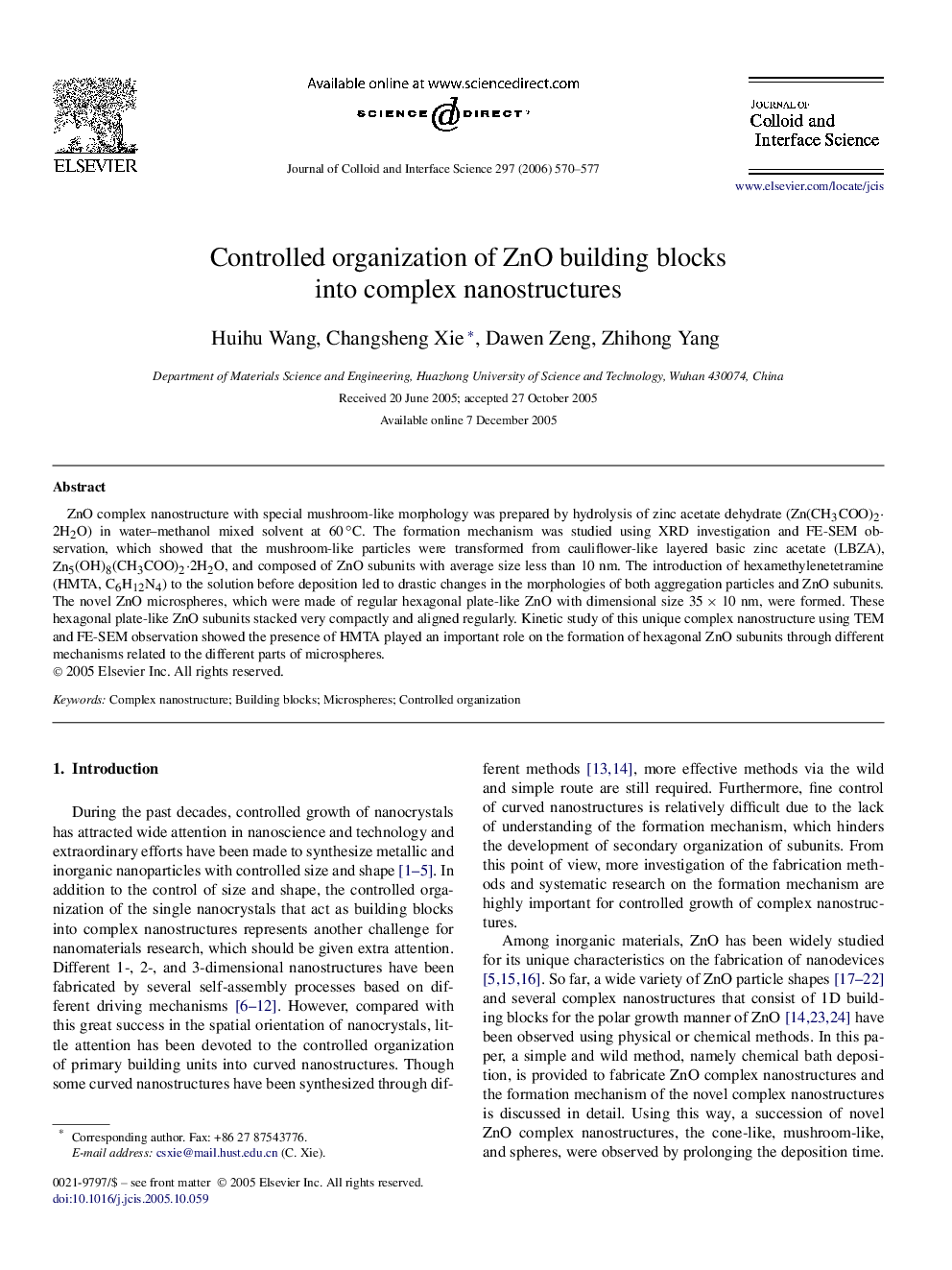| Article ID | Journal | Published Year | Pages | File Type |
|---|---|---|---|---|
| 613226 | Journal of Colloid and Interface Science | 2006 | 8 Pages |
ZnO complex nanostructure with special mushroom-like morphology was prepared by hydrolysis of zinc acetate dehydrate (Zn(CH3COO)2⋅2H2O) in water–methanol mixed solvent at 60 °C. The formation mechanism was studied using XRD investigation and FE-SEM observation, which showed that the mushroom-like particles were transformed from cauliflower-like layered basic zinc acetate (LBZA), Zn5(OH)8(CH3COO)2⋅2H2O, and composed of ZnO subunits with average size less than 10 nm. The introduction of hexamethylenetetramine (HMTA, C6H12N4) to the solution before deposition led to drastic changes in the morphologies of both aggregation particles and ZnO subunits. The novel ZnO microspheres, which were made of regular hexagonal plate-like ZnO with dimensional size 35×10 nm35×10 nm, were formed. These hexagonal plate-like ZnO subunits stacked very compactly and aligned regularly. Kinetic study of this unique complex nanostructure using TEM and FE-SEM observation showed the presence of HMTA played an important role on the formation of hexagonal ZnO subunits through different mechanisms related to the different parts of microspheres.
Graphical abstractA novel curved nanostructure that ZnO submicron spheres organized by the building blocks—hexagonal nanoplatesFigure optionsDownload full-size imageDownload as PowerPoint slide
